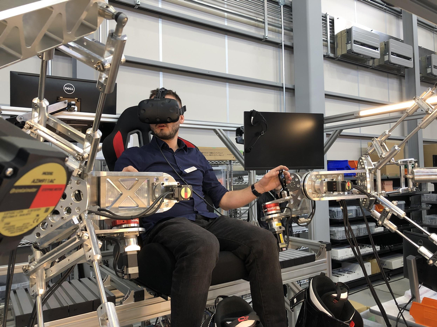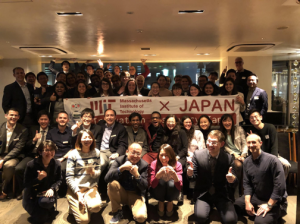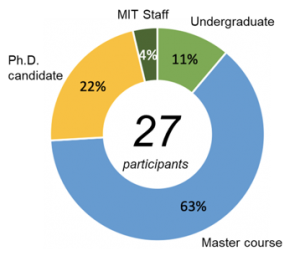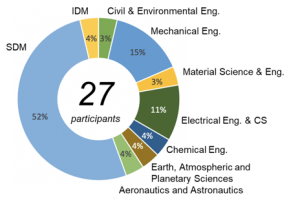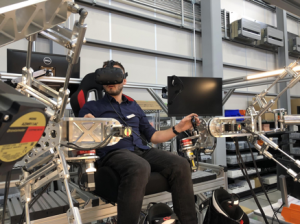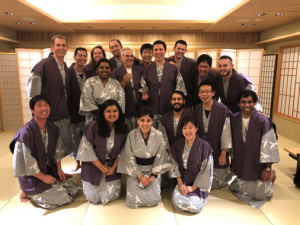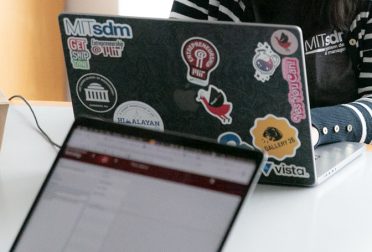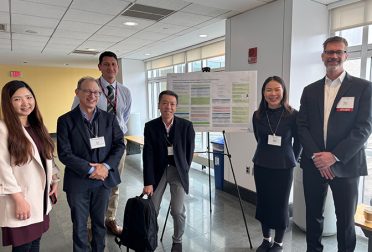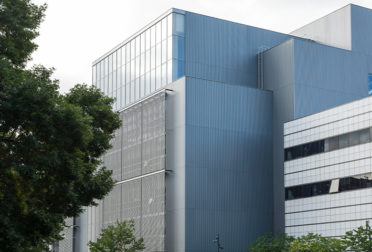Report by Hiroyuki Ikukawa, Ayano Kagami, and Koji Nakashima, SDM Fellows
1. Overview
What is IDJ?
Innovation Discovery Japan (IDJ) is a tech trek to Japan in which MIT students and researchers visit technology-oriented Japanese companies and research institutes. IDJ was established in 2017 by Japanese students at MIT to build networks between MIT and Japan by exposing MIT students and faculty to Japanese technologies and businesses. The third trek, IDJ ’19, took place January 21-25, 2019.
Demographics
IDJ’19 participants come from diverse fields and programs within MIT, which allows everyone involved to learn from each other as well as from the companies. Fourteen SDM fellows participated in IDJ’19, which was led by seven Japanese students from SDM. These SDM students (Hiroyuki Ikukawa, Ayano Kagami, Takuya Kashimura, Koji Nakashima, Yuki Soeda, Ryuichi Takagi, and Yasutsugu Tamura) organized company visits and managed logistics for the tour.
Overall Schedule
We spent five days visiting companies in Nagoya, Kyoto, Osaka, and Tokyo. The participants divided into groups based on their interests; during the trek, we visited 10 companies in total. To meet the diverse interests of participants from different backgrounds, we selected companies from a variety of industries and in a range of sizes, from large, established companies to small startups.
2. Company visit report
Toyota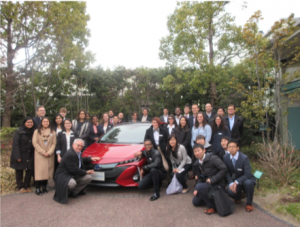
We visited the Tsutsumi manufacturing plant, home of the Prius and Camry production lines. We were able to see the Toyota Production System in action through the welding process, which used synchronized and densely packed robots, and the assembly process, which involved a largely uninterrupted flow of cars-in-the-making, materials, and people.
It was impressive to see how Toyota has optimized its processes, balancing the work of people and automated systems across the manufacturing value stream. We were also impressed by Toyota’s commitment to the Kanban and Jidoka culture that provides the foundation for Toyota Next Generation Architecture. This commitment has led Toyota to increase the modularity and flexibility of its systems to create more commonality across platforms and production sites.
Jinki-Ittai is a small startup focused on using teleoperated robotics to enable humans to lift and move heavy objects. Its system includes force feedback so that the human operator can actually sense resistance through the joystick—for example, if the machine is pushing against a wall. For visibility, a virtual reality headset is worn, broadcasting the stereo-vision setup on the head of the robot so that the user actually sees what the robot sees. In its current form, the robot has two halves: the torso (including two manipulators and a sensing head) and the leg section. After the discussion, students were able to see the robot, and some were even able to test out its controls.
Astroscale
Astroscale is a small aerospace company focused on cleaning up orbital debris. It has developed a chaser satellite outfitted with a magnetic capture mechanism that can rendezvous with a target satellite and ensure both burn up in the atmosphere. Astroscale is hoping to lead this field as the amount of end-of-life regulations regarding small satellites increases. Company leaders plan to expand their business once their chaser satellite has flown its first mission. We visited their engineering facility and were also able to chat with an MIT AeroAstro alumnus about his experience working at Astroscale.
teamLab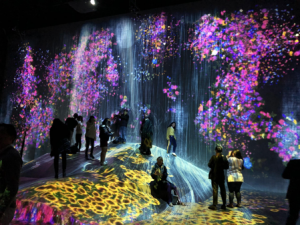
teamLab focuses on creating interactive and immersive digital artwork with software. We were able to get insights into how the company develops ideas as well as the vision behind its work.
The name truly encompasses the effort to develop each display: It really does take a team of creators and visionaries to make digital art a reality. Now art is not only an outlet for artists but also for engineers who want to use their technical abilities to create and imagine.
3.Voice from participants
Garrett A. Hemann
IDJ didn’t just give perspective, it transformed perspective. There really is something unique about Japanese companies, and the opportunity to meet with over 10 different companies in one week is a once-in-a-lifetime opportunity. The variety of technology ranges from space-debris-cleaning satellites, to re-engineered stem cells, to massive immersive interactive art installations. And, if that does not impress you enough, imagine a 600 km/hour train in a tunnel from Tokyo to Nagoya. Beyond the profoundness of these technologies, the trip itself was seamlessly executed. The organizers were gracious hosts and dedicated so much time to our daily and evening activities, which included lots of delicious food and fun hangouts.
Afra Ansaria
The only thing I knew about Japan before this trip is that people in Japan work very efficiently and they make excellent sushi. Although I wasn’t wrong about either of these things, I got to see a much larger picture of the country. The efficiency of people’s work can be seen in the country’s most basic system—the transport system. From the subways to the Shinkansen (bullet train), everything runs on time, down to the second. The Western phrase, “running late due to traffic,” is invalid in Japan. The companies that we visited exposed us to the startup culture that’s budding up in Japan. One can find Toyota’s concept of Jidoka, humanized automation, in almost every company that we visited. The ability to pay attention to detail is embedded in every aspect of Japanese culture, be it a startup or even food. Speaking of food, one can spend a whole month in Japan trying out different varieties of food. Everything tastes delicious and fresh!
Lastly, the trip was phenomenal because of the excellent work that IDJ organizers put into it. I’m very glad that I took the IDJ tour, and I highly recommend that people take this tour!

